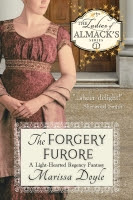But it’s the nature of that poor soil that makes Wilstshire—and other places across southern England—the first stop on our Summer Tour. Forming the hills under that thin soil is chalk—yes, the white stuff formerly used to write on blackboards in classroooms. And at some point back in prehistory, someone figured out that you could cut shallow trenches in the soil to expose the underlying chalk, and create enormous pictures spreading across hillsides…like this:
 That’s the 374 ft. long White Horse of Uffington, (nearby in Oxfordshire, by the way, not Wiltshire) dating back to about 3000 years ago. But in historical times, chalk cutting became a popular pastime for landowners, and Wiltshire is home to several of them. There’s the Westbury White Horse, carved in the 1770s for a Mr. Gee (though it may have covered an earlier figure—mention of a horse carving there dates back to 1742):
That’s the 374 ft. long White Horse of Uffington, (nearby in Oxfordshire, by the way, not Wiltshire) dating back to about 3000 years ago. But in historical times, chalk cutting became a popular pastime for landowners, and Wiltshire is home to several of them. There’s the Westbury White Horse, carved in the 1770s for a Mr. Gee (though it may have covered an earlier figure—mention of a horse carving there dates back to 1742):
And here’s another, the Cherhill White Horse, carved in 1780 by a Dr. Alsop and measuring about 160 feet across:
 The somewhat smaller--62 ft--Marlborough White Horse was carved in 1804 by schoolboys from a nearby school, and refurbishing it was a yearly school tradition. These chalk figures require upkeep—weeding and replenishing the chalk—at frequent intervals:
The somewhat smaller--62 ft--Marlborough White Horse was carved in 1804 by schoolboys from a nearby school, and refurbishing it was a yearly school tradition. These chalk figures require upkeep—weeding and replenishing the chalk—at frequent intervals: So what inspired people to spend a great deal of effort to dig trenches hundreds of feet long to form these pictures? The 18th century was really the first great period of English landscape gardening, and carving chalk figures into hillsides was one way to play with the landscape, if you happened to own hundreds of acres in chalk down country. I am sure our young 19th century tourist misses, on their way perhaps to view the stately homes at Longleat or Fonthill Abbey (which I shall write about later this summer), enjoyed side trips to view these images, startlingly white against the green summer grass.
So what inspired people to spend a great deal of effort to dig trenches hundreds of feet long to form these pictures? The 18th century was really the first great period of English landscape gardening, and carving chalk figures into hillsides was one way to play with the landscape, if you happened to own hundreds of acres in chalk down country. I am sure our young 19th century tourist misses, on their way perhaps to view the stately homes at Longleat or Fonthill Abbey (which I shall write about later this summer), enjoyed side trips to view these images, startlingly white against the green summer grass.And enormous horses aren’t the only chalk carvings around; huge figures of men also exist such as the Wilmington Figure (which may also date to prehistoric times) and the Cerne Abbas Giant, probably carved during the English Civil War as a sort of satirical cartoon of Oliver Cromwell! The practice continues even today, as a White Horse was created just in 2003 at Folkestone in Kent, overlooking the terminal for the Channel Tunnel. And they remain a tourist attraction in the 21st century; visit http://wiltshirewhitehorses.org.uk/ to learn more about Wiltshire’s White Horses.
Don't forget--through July 12, all Nineteenteen commenters will be entered in a drawing to win Regina's Irresistible Earl beach tote. So what are you waiting for?





4 comments:
That is SO coool! I love it, if I ever go abroad I will definitely have to check that out. Thanks for sharing! Never heard of them before.
Glad you found it interesting! I've been to Stonehenge, but never had a chance to see any of these, and I'd like to too!
I wish I had seen one of these horses when I was in the England. It doesn't even surprise me that the upper classes would make their own horses as a pastime or part of their landscaping.
Thanks for the fun post. I'll have to look out for these horses the next time I visit England :)
Wow, so that's were Terry Pratchet got the idea for his tiffany books set in disk world. I bet my mom (a huge fan of Terry pratchet)already knew about it. But that is really cool.
Post a Comment